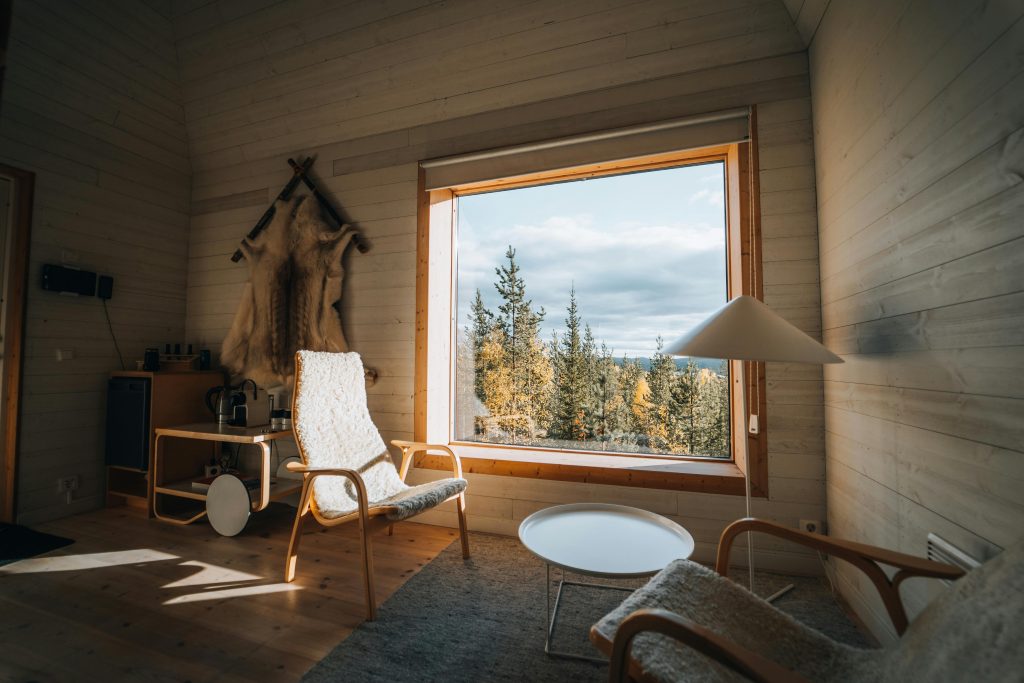Tiny Homes in Utah: A Comprehensive Guide to Regulations and Sustainable Living


The tiny home movement is steadily growing across the U.S., and Utah is becoming a hotspot for those seeking a sustainable, minimalist lifestyle. These compact homes, typically under 400 square feet, are designed with efficiency in mind, utilizing smart layouts, multifunctional furniture, and eco-friendly materials. The appeal of tiny homes lies in their ability to offer a simplified way of living while significantly reducing environmental impact. With rising interest in minimalism and sustainable living, more Utah residents are exploring this unique housing option, eager to downsize and prioritize environmental responsibility.
Utah’s landscape, with its beautiful outdoor scenery and emphasis on sustainability, provides an ideal backdrop for the tiny home lifestyle. Residents can enjoy the freedom of living minimally, with reduced utility costs and a smaller carbon footprint. However, understanding the regulations and challenges surrounding tiny homes in Utah is essential for anyone considering this lifestyle. While tiny homes offer a wealth of benefits, navigating zoning laws and building codes requires thorough research and careful planning.
What Are Tiny Homes?
Tiny homes are compact, efficient living spaces, typically ranging from 100 to 400 square feet. They come in various forms, including tiny homes on wheels (mobile and flexible) and foundation-based tiny homes (more permanent structures). These homes prioritize clever, space-saving designs, integrating multi-functional furniture, built-in storage, and energy-efficient systems to make the most out of every square foot. The goal is to provide a full range of modern amenities while maintaining a minimalistic, eco-conscious footprint.
The concept behind tiny homes is simple: create a living space that meets modern needs but in a smaller, more sustainable footprint. Many tiny homes incorporate renewable energy systems like solar panels or composting toilets, reducing their reliance on external utilities. Additionally, they are often built using eco-friendly materials such as reclaimed wood or recycled metal, which minimizes their environmental impact. By focusing on minimalist living, tiny homes encourage residents to reduce clutter and only keep what is necessary, aligning with the growing trend of eco-conscious living.
Benefits of Tiny Home Living
Tiny home living offers a range of benefits, from sustainability to financial savings. One of the most appealing aspects is the reduced energy consumption, which is often achieved through the use of solar panels, energy-efficient appliances, and sustainable building materials. This not only lowers utility bills but also helps tiny homeowners significantly reduce their carbon footprint. For those looking to live more sustainably, tiny homes provide an opportunity to adopt eco-friendly practices without sacrificing modern conveniences.
Financially, tiny homes are an attractive option for individuals looking to own a home without the steep costs associated with traditional housing. The smaller size means lower construction costs, reduced maintenance, and decreased utility expenses. Additionally, many tiny homes are designed with mobility in mind, allowing owners to relocate easily without the need for a new property purchase. This flexibility appeals to those who crave adventure and change but still want the comfort of a consistent living space.
- Sustainability: Tiny homes consume significantly less energy, often using renewable resources like solar panels and wind turbines. This reduces overall energy consumption and promotes a greener lifestyle.
- Affordability: With lower construction, utility, and maintenance costs, tiny homes are an attractive option for budget-conscious individuals looking to own a home.
- Minimalism: By promoting a clutter-free lifestyle, tiny homes encourage owners to focus on what’s truly essential.
- Mobility: Tiny homes on wheels offer the flexibility to relocate, allowing homeowners to explore different environments without leaving their home behind.
- Connection to Nature: Many tiny homes are built in natural surroundings, encouraging outdoor living and a closer connection to the environment.
Tiny Home Communities in Utah
Utah is home to several emerging tiny home communities that foster sustainable living and a strong sense of community. Examples include Escalante Village and Zion’s Tiny Oasis, where residents share resources like communal gardens and tool libraries, promoting a more eco-conscious way of life. Zoning regulations vary by county, and understanding local laws is essential when considering joining or establishing a tiny home community.
However, zoning regulations and building codes can vary significantly by county in Utah. Some areas welcome tiny homes and their communities, while others enforce strict limitations on where they can be placed or how they must be constructed. Prospective tiny home buyers need to familiarize themselves with local laws to ensure their homes meet zoning and code requirements. Researching local regulations and working with experienced professionals can help prospective residents avoid potential setbacks and find the perfect location to set up their tiny home.
Sustainable Features in Tiny Homes
Sustainability is at the heart of tiny home design, with many incorporating innovative features to reduce environmental impact. Energy efficiency is a primary focus, with homes often equipped with solar panels, LED lighting, and highly insulated walls and windows to minimize energy consumption. Water conservation is another key consideration, with many tiny homes featuring rainwater harvesting systems, low-flow fixtures, and greywater recycling systems to reduce water waste.
Tiny homes are often constructed using eco-friendly or recycled materials, such as reclaimed wood or green insulation products that are non-toxic and biodegradable. These choices not only reduce the environmental footprint of the construction process but also promote healthier living environments for residents. Additionally, many tiny homes are designed with off-grid living in mind, incorporating renewable energy sources and composting toilets to allow for self-sufficient living without reliance on public utilities.
Tiny homes are designed with sustainability at their core. Key features include:
- Energy Efficiency: Tiny homes often rely on solar panels, LED lighting, and energy-efficient appliances to reduce power consumption.
- Water Conservation: Many tiny homeowners install low-flow fixtures and rainwater harvesting systems to minimize water usage.
- Eco-Friendly Materials: Recycled or non-toxic materials, such as reclaimed wood or green insulation, are frequently used to enhance sustainability.
- Off-Grid Living: Tiny homes can be designed to be self-sufficient, relying on renewable energy sources and composting toilets for a fully off-grid experience.
Challenges of Tiny Home Living
While tiny home living offers numerous benefits, it also presents challenges, particularly regarding zoning regulations and building codes. In Utah, these rules vary by county, with some being more lenient and others more restrictive. Space constraints and adjusting to a minimalist lifestyle can also pose difficulties for those unaccustomed to smaller living environments. Additionally, finding land suitable for tiny homes, especially in urban areas, can be a challenge.
Adjusting to the small space can also be a challenge for those new to minimalist living. Tiny homes require careful organization and a willingness to downsize possessions. For some, the lack of space for storage, entertaining, or even basic daily activities can be difficult to adapt to. Additionally, finding land that meets zoning regulations and is suitable for tiny home placement can be challenging, especially in more urbanized areas of Utah. Overcoming these obstacles often requires thorough planning, flexibility, and an understanding of local laws and community options.
Cost of Building or Buying a Tiny Home in Utah
One of the main attractions of tiny homes is their affordability, but it’s important to understand the different costs involved. While tiny homes are significantly less expensive than traditional homes, the final price can vary depending on factors such as the materials used, the level of customization, and whether the home is mobile or stationary. A typical tiny home in Utah can range from $30,000 to $100,000, with custom builds on the higher end and pre-fabricated models offering more budget-friendly options.
Land acquisition is another key consideration, as buyers must secure a plot of land that is properly zoned for tiny homes. In more rural areas, land may be affordable and easier to find, but urban locations can be more expensive and subject to stricter regulations. Additionally, utility costs will vary based on whether the home is connected to a public grid or designed for off-grid living. Potential buyers should also factor in financing options, such as RV loans, personal loans, or crowdfunding, which are commonly used to finance tiny homes.
Tiny homes are a cost-effective alternative to traditional housing, but it’s important to understand the breakdown of costs:
- Land: Securing land in an appropriate zoning area is a major consideration.
- Materials and Construction: Custom-built homes with sustainable features tend to cost more, while pre-fabricated options offer lower price points.
- Utilities: Depending on whether the home is connected to a grid or off-grid, utility costs can vary.
- Average Cost: A tiny home in Utah typically ranges from $30,000 to $100,000, depending on size, features, and location.
- Financing Options: RV loans, personal loans, or crowdfunding are common ways to finance tiny homes.
Tiny Home Builders in Utah
Utah has several experienced builders specializing in tiny home construction, offering both custom-built and pre-fabricated options. Custom homes provide the advantage of tailoring every aspect to the owner’s needs, while pre-built homes tend to be more affordable and quicker to set up. When choosing a builder, it’s important to select one familiar with Utah’s building codes and zoning regulations to ensure compliance.
When selecting a builder, it’s important to choose one who is familiar with Utah’s building codes and zoning regulations to ensure compliance. Working with an experienced builder who understands local requirements can prevent legal complications and ensure the home is built to code. Many builders also offer options for off-grid systems, sustainable materials, and energy-efficient appliances, helping buyers design a tiny home that aligns with their environmental and financial goals.
Environmental Impact of Tiny Homes
Tiny homes offer a significantly lower carbon footprint compared to traditional housing. Their smaller size means reduced energy and resource consumption, from materials during construction to daily utilities like heating and cooling. Many tiny homes are designed to operate on renewable energy, further decreasing environmental impact. As cities and states look toward sustainable urban development, tiny homes are being recognized as part of the solution.
Moreover, tiny homes can contribute to sustainable urban development by offering a solution to overpopulation and housing shortages. As cities grow, tiny homes present a lower-impact alternative to sprawling urban development, allowing residents to live in harmony with the environment. By prioritizing sustainable design and energy efficiency, tiny homes are becoming part of the broader movement toward reducing the environmental impact of modern housing.
Living the Tiny Life: Tips for Success
Transitioning to tiny home living requires careful planning and a mindset shift. To make the most of the space, multi-functional furniture is key—think fold-out beds, collapsible tables, and built-in storage. Using vertical storage solutions can also help maximize every inch of the home. Additionally, focusing on minimalism and reducing possessions can make the small space feel more open and manageable.
Lighting plays a significant role in making a tiny home feel more spacious, so incorporating large windows and natural light can help create an airy, open environment. Planning for outdoor space is another tip for success—many tiny home dwellers use outdoor living areas to extend their home and provide additional space for activities or relaxation. By embracing the minimalist mindset and carefully considering space-saving solutions, tiny homeowners can create a functional and comfortable living environment.
To successfully transition to tiny home living:
- Maximize space with multi-functional furniture and smart storage solutions.
- Embrace a minimalist mindset to simplify and declutter your life.
- Use strategies like vertical storage and creative lighting to make the space feel more open.
Conclusion
Tiny home living in Utah offers a pathway to sustainable, affordable, and minimalist living. As the state continues to support tiny home communities and develop progressive zoning laws, the movement is becoming more accessible to those seeking a simpler, eco-friendly lifestyle. Whether you’re considering building or buying a tiny home, Utah provides a supportive environment for tiny house enthusiasts.
KR Elite is here to guide you through every step of your tiny home journey, from design and construction to navigating local regulations.
